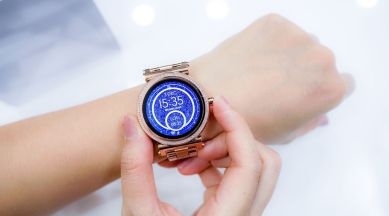Smartwatches can detect Parkinson’s disease before it is diagnosed, finds study
Researchers used data from smartwatches to predict which participants will receive a Parkinson's diagnosis.

Smartwatches are truly incredible devices. To a certain level of accuracy, they can constantly detect your heart rate, blood oxygen saturation, blood pressure and even more. Now, researchers have found that smartwatches could be used to detect Parkinson’s disease long before it is detected.
In a study published yesterday in the journal Nature Medicine, researchers have found that wearable movement-tracking devices, like smartwatches with accelerometers, can identify Parkinson’s disease long before it is clinically diagnosed.
monthly limit of free stories.
with an Express account.
A team of researchers came to this conclusion by analysing more than 103,000 people who wore medical-grade wearables for seven days, measuring their speed of movement continuously, according to Sky News.
Parkinson’s disease is a degenerative nervous system disease that mainly affects people’s motor systems. Its symptoms usually occur slowly, meaning that often, too much irreversible damage is done before the disease is officially diagnosed. The earliest symptoms include tremors, rigidity, slowness of movement and difficulty with walking. The researchers propose that commonly used smartwatches could be used to detect early signs of the disease.
“We have shown here that a single week of data captured can predict events up to seven years in the future. With these results, we could develop a valuable screening tool to aid in the early detection of Parkinson’s. This has implications both for research, in improving recruitment into clinical trials, and in clinical practice, in allowing patients to access treatments at an earlier stage, in future, when such treatments become available,” said Cynthia Sandor, corresponding author of the paper, to BBC.
The watches calculated movement signals from the participants and an AI model then compared this data with a group of people who had already received a Parkinson’s diagnosis, according to The Independent. The model was even able to predict a timescale of how the disease will progress.